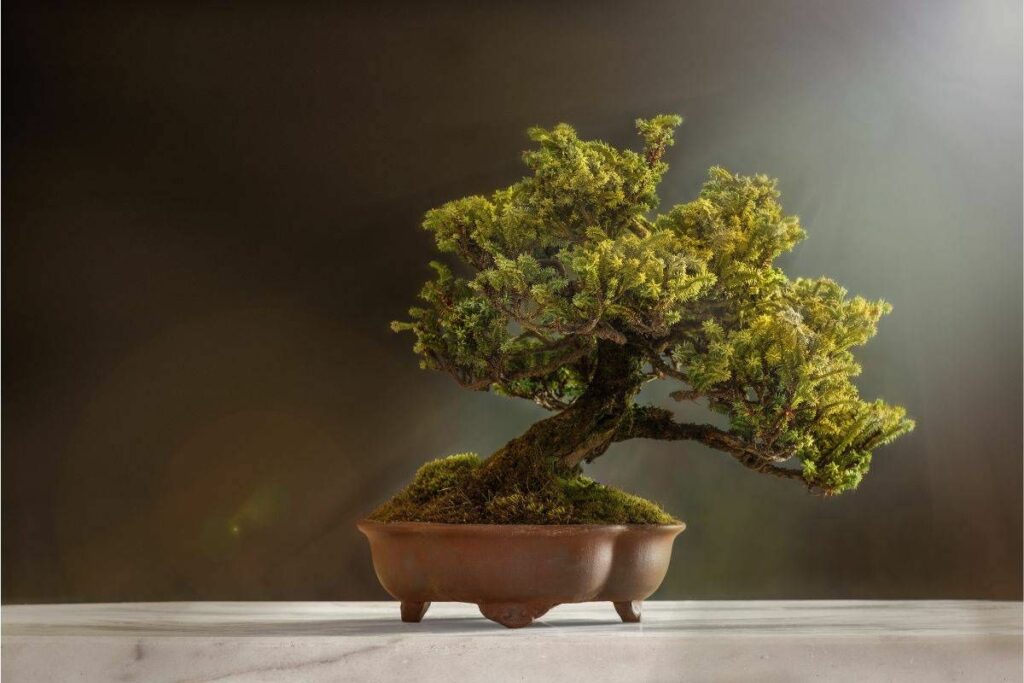Have you ever noticed that your Juniper bonsai is turning yellow? It can be an alarming sight for any bonsai enthusiast, as the vibrant green foliage of a healthy juniper gives way to a pale yellow hue. But what causes this discoloration and how can it be prevented? In this article, we’ll explore why your juniper bonsai might be turning yellow, and what you can do to prevent it from happening.
The first step in understanding why your Juniper is changing color is understanding the basics of bonsai care. Bonsais require careful attention and regular maintenance in order to stay healthy. Without the right amount of sunlight, water, and fertilization, the leaves of a bonsai will begin to turn yellow or even brown.
In addition to providing adequate care, there are other factors which may cause yellow leaves. These include pests or disease which feed off of the plant’s nutrients and leave behind unhealthy foliage. Pests such as aphids or mealybugs can cause discoloration in a short period of time if left unchecked. Lastly, environmental factors like too much direct sunlight or extreme temperatures can also lead to yellowing leaves on your beloved bonsai tree.
By understanding why your Juniper is turning yellow, you can take preventive measures to ensure that it stays in good health for years to come. Read on to discover more about caring for your juniper bonsai!
1. Causes Of Yellowing In Juniper Bonsai
When it comes to bonsai, one of the most common issues is yellowing. Juniper bonsais are no exception – if you have one, chances are you’ve seen some yellowing in its leaves. But why does this happen? Let’s take a closer look at the causes of yellowing in juniper bonsais.
The main cause of yellowing in juniper bonsai is overwatering. Too much water can cause the soil to become waterlogged, and this prevents oxygen from getting to the roots. As a result, the leaves will turn yellow due to lack of nutrients. Additionally, too much shade or inadequate sunlight may also be a factor in causing your juniper bonsai to turn yellow.
Another possible culprit is pests like aphids, mealybugs, and scale insects. These insects feed on plants and sap their nutrients, leading to an unhealthy plant with discolored leaves. Additionally, nutrient deficiencies can also lead to yellowing leaves – if your juniper bonsai isn’t getting enough nitrogen or other essential vitamins and minerals, it won’t thrive and its leaves will become discolored as a result.
To prevent your juniper bonsai from turning yellow, make sure it’s getting enough sunlight and that you’re not over-watering it. You should also inspect it regularly for signs of pests and treat them accordingly if any are found. Finally, you should use a fertilizer specifically designed for junipers to ensure it has all the necessary nutrients for healthy growth.
2. Overwatering And Poor Drainage
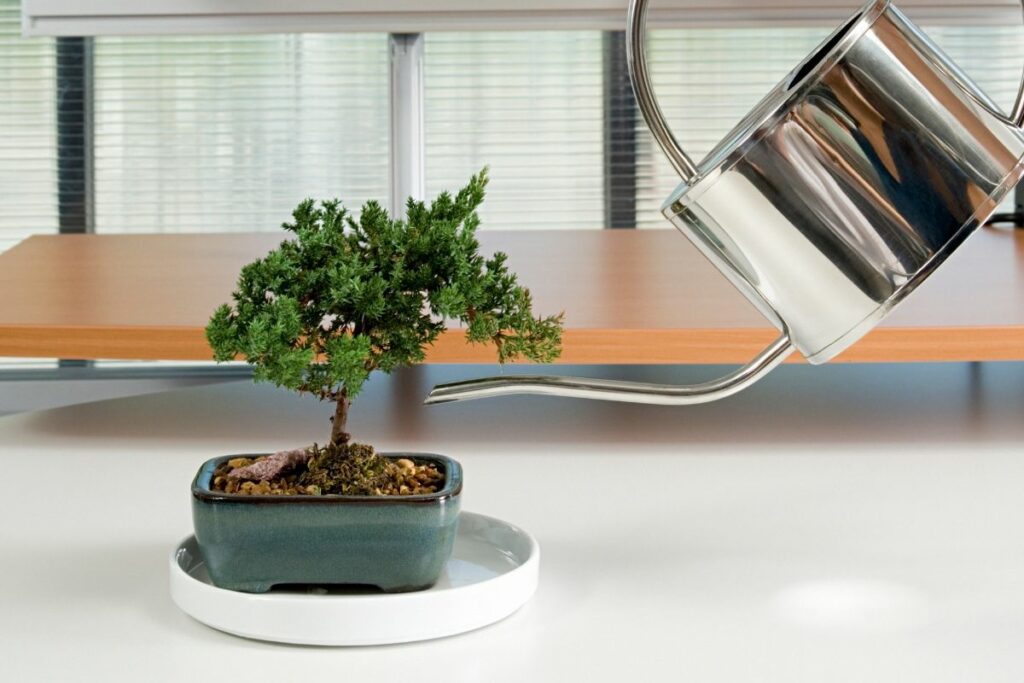
Overwatering and poor drainage are two of the most common causes of yellowing in juniper bonsai. If a juniper bonsai is overwatered, the roots can become waterlogged, preventing them from taking up oxygen. This leads to anoxia, which prevents the plant from receiving the nutrients it needs and causes the leaves to turn yellow or brown. Poor drainage can also cause water to pool around the roots, leading to similar symptoms.
It’s important to ensure that your juniper bonsai is planted in soil with good drainage so that it doesn’t become waterlogged. You should also pay attention to how often you’re watering your bonsai. While it’s true that junipers need regular watering, too much water can be just as damaging as too little. When watering your bonsai, make sure you wait until the top inch of soil has dried out before adding more moisture — then only give enough water that it reaches the roots but not so much that it pools at the base of your pot.
If you’ve noticed yellowing on your juniper bonsai, take a look at how often you’ve been watering and whether or not there’s adequate drainage in place. If necessary, consider repotting your bonsai into a different type of soil with better drainage properties. With proper care and attention, you should be able to restore your juniper back to health quickly and easily.
3. Sunlight And Temperature
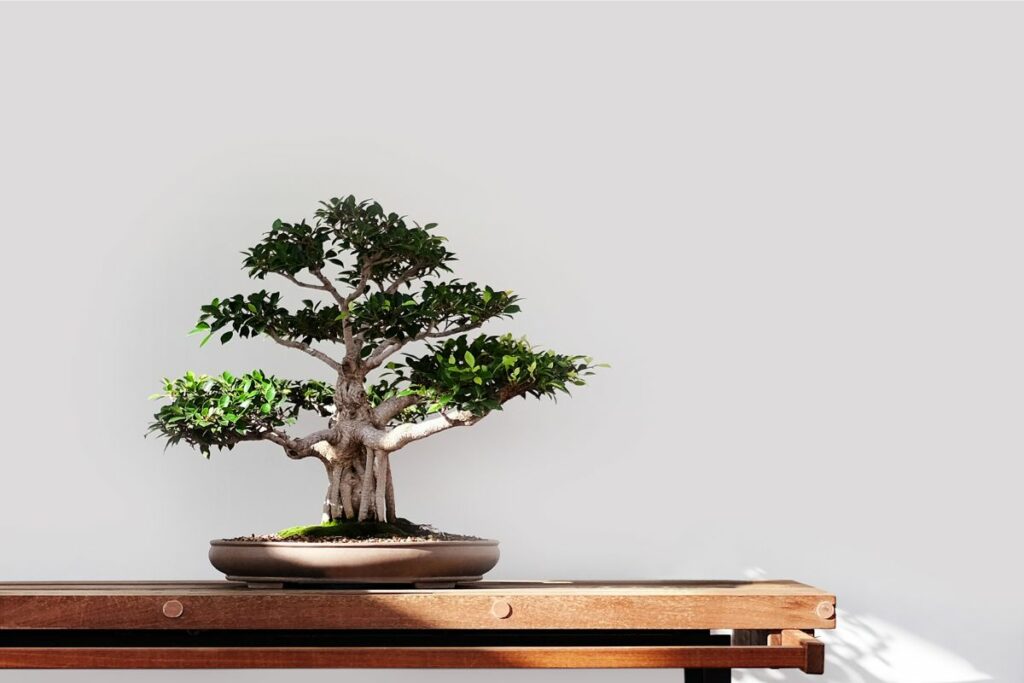
Sunlight and temperature are two critical factors when it comes to the health of a juniper bonsai. Too much or too little of either can cause yellow leaves to form. This is why it’s so important to understand where and how to place your bonsai tree in order for it to receive enough sunlight and an optimal temperature range.
When it comes to sunlight, the amount of direct light your bonsai receives should be monitored closely. Direct sunlight, even for short periods of time, can cause the leaves to burn and turn yellow. Instead, find a spot that gets indirect sunlight throughout the day, such as near a window or on a patio.
Temperature is also very important for keeping your juniper bonsai healthy. The ideal temperature range is between 40-85°F during the day and 45-65°F at night. If you keep your bonsai indoors, make sure there is sufficient airflow in order to avoid high humidity levels which can lead to fungal diseases or other problems that may cause the leaves to turn yellow.
It’s essential that you pay attention to both the amount of light and temperature when caring for your juniper bonsai so that its leaves stay healthy and vibrant.
4. Soil Quality And Nutrient Deficiencies
Soil quality and nutrient deficiencies are important factors to consider when trying to figure out why your juniper bonsai is turning yellow. Poor soil quality or an imbalance in soil nutrients can cause a variety of symptoms, including yellowing leaves. In order to determine if this is the cause of your bonsai’s distress, it’s important to understand how soil nutrients work and how they affect plant health.
The type of soil that you use for your bonsai is integral to its health. Junipers prefer well-drained soils with plenty of organic matter like peat moss or composted bark. If the soils are too dense or not well-aerated, roots may struggle to grow and develop properly, which could lead to nutrient deficiencies in the plant. Additionally, if there is an imbalance in essential soil nutrients—such as calcium, magnesium, nitrogen and phosphorus—it can cause plants to experience yellowing leaves as a sign of stress.
To ensure that your juniper bonsai has healthy soil conditions, it’s important that you regularly check the pH level and nutrient levels of the soil. If necessary, you can amend the soil with a fertilizer that contains all essential macro- and micronutrients for optimal growth. Taking care of these issues will help your bonsai stay healthy and vibrant for years to come.
If you think that poor soil quality or nutrient deficiencies are causing your juniper bonsai’s yellowing leaves, then taking steps to improve the condition of the soil should help resolve any issues with plant health.
5. Insect And Pest Infestations
When it comes to your juniper bonsai turning yellow, insect and pest infestations could be the cause. Many pests can cause yellowing of leaves and needles, as well as other symptoms like stunted growth or brown patches on the foliage. To identify if this is indeed the cause of your bonsai’s discoloration, look for signs of insects or damage from their activities. This could include holes in the leaves or needles, webs between branches and twigs, or egg clusters on the undersides of foliage.
Once you’ve identified an insect infestation, it’s important to take action right away to prevent further damage. Start by removing any dead foliage or debris around the bonsai that could be harboring pests. Then inspect nearby plants for signs of infestation and treat them as necessary. Finally, use an insecticide specifically designed for use on bonsais to rid your plant of unwelcome visitors.
It’s also a good idea to keep a close eye on your juniper bonsai after treating it with an insecticide to make sure that no new pests have taken up residence. Keep an eye out for discoloration in its foliage and check regularly for any signs of damage from insects or activity from their larvae. If you catch an infestation early enough, you may be able to save your juniper bonsai before too much damage is done. With a little extra care and attention, you can keep your bonsai healthy and looking its best!
6. Disease And Fungal Infections
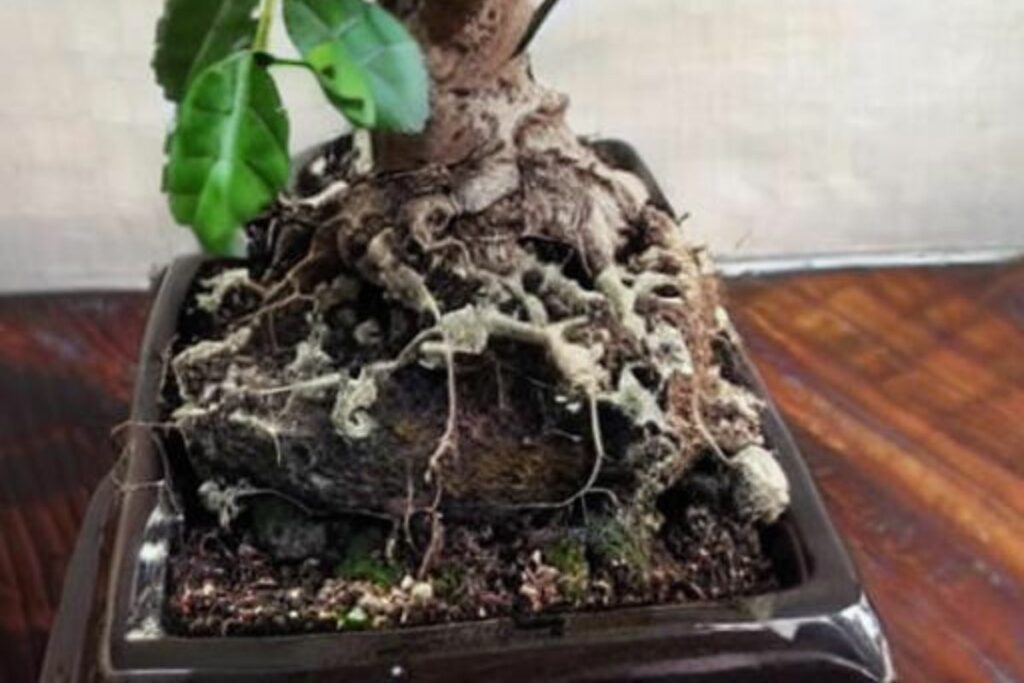
Disease and fungal infections can also be a cause of yellowing in juniper bonsais. Fungal infections are caused by fungus spores which can enter the plant through wounds or even via air. These spores can then spread to the leaves and branches, causing discoloration and eventual death of the bonsai if left untreated.
Signs of fungal infection include yellow spots on the leaves, bark lesions, brown patches on the needles, and branch dieback. To prevent fungal infections from occurring, it is important to ensure that your juniper bonsai has proper drainage and is not overwatered. It is also important to prune away any dead or diseased branches as soon as they are noticed in order to reduce further spread of the infection.
In addition, fungicides can be used to treat infected plants by spraying them directly onto the affected areas or soaking them in a fungicide bath. However, it is important to note that fungicides should only be used as a last resort when all other methods have failed as they may be harmful to both humans and animals if not used correctly. Taking good care of your juniper bonsai with proper watering and regular pruning will help prevent disease and fungal infections from occurring in the first place.
7. Water Quality And Ph Level
Water quality and pH level can also be factors in why a juniper bonsai is turning yellow. The soil in which the bonsai is planted needs to have the right balance of nutrients and water in order to thrive. Too much or too little water, or too high or low pH levels, can cause the foliage to turn yellow.
It’s important to provide adequate moisture for a juniper bonsai, but it’s also important not to over-water it. Junipers need well-draining soil and should never be allowed to sit in standing water. It’s best to check the soil regularly and only give your bonsai enough water when it feels slightly dry to the touch.
Additionally, if you’re watering with tap water, you’ll need to check its pH level before using it as well. Tap water may contain minerals that can build up in potting soil over time and create an imbalance of nutrients for your juniper bonsai. If you find that your tap water has a higher than average pH level, you can always opt for rainwater or distilled water instead.
Ultimately, making sure your juniper bonsai is getting enough moisture and that the pH levels are balanced can help keep it healthy and avoid any yellowing of its foliage.
8. Air Circulation And Humidity
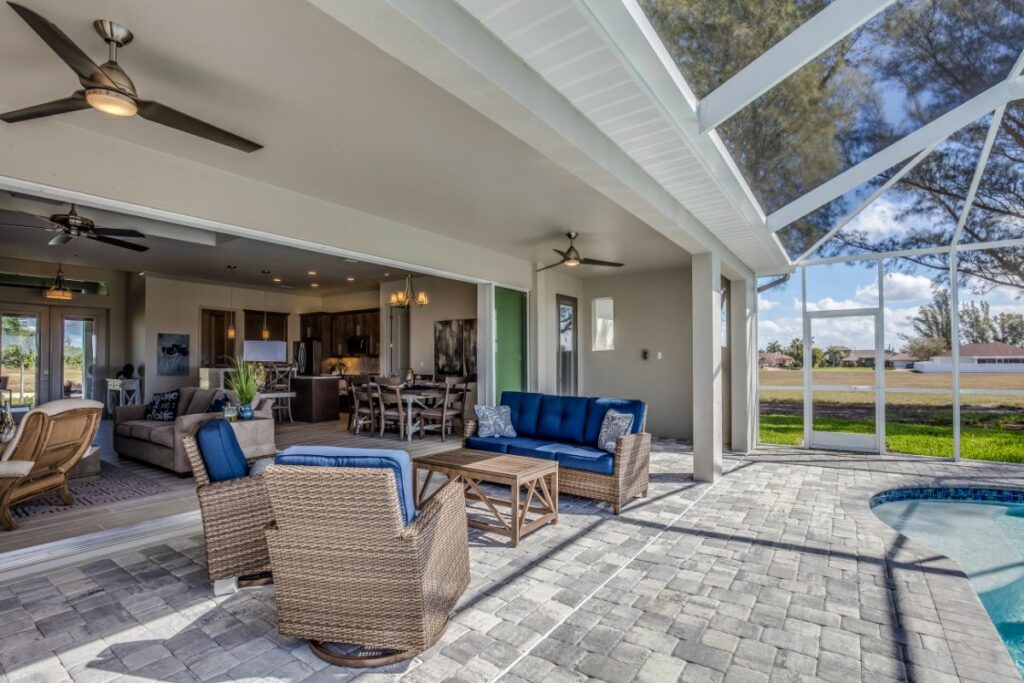
Air circulation and humidity are important factors for keeping a Juniper Bonsai healthy. Without the proper levels of air circulation and humidity, the plant can become stressed and even start to turn yellow. This can be caused by environmental conditions like too much or too little direct sunlight, an overcrowded environment, or a closed room without air flow.
To fix this issue, it’s important to provide enough air circulation in the area around your Juniper Bonsai. Make sure that there is sufficient distance between other plants, so that each one gets its own space to breathe. Additionally, try to find a location with plenty of natural light but not too much direct sun exposure.
Humidity is also a key factor in maintaining the health of your Juniper Bonsai. You’ll want to keep the air around your plant moist but not wet; you can do this by misting your Bonsai every day or setting up a humidifier in the area. Furthermore, make sure that you avoid overwatering your plant – this could lead to root rot or other issues with its health.
By monitoring both air circulation and humidity levels around your Bonsai, you can ensure that it stays healthy and free from yellowing leaves over time. Creating an optimal environment for your plant will help it thrive – so take some time now to assess these two factors!
9. Pruning And Repotting
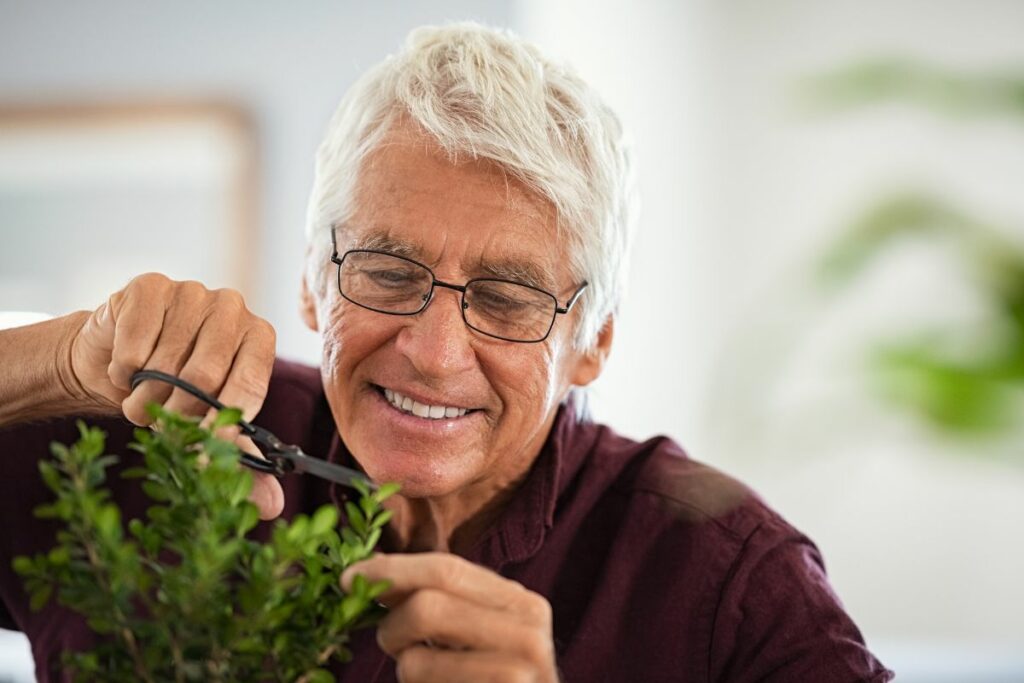
Pruning and repotting are important steps in caring for a juniper bonsai. Regular pruning helps to keep the tree’s shape as it grows, while repotting allows you to refresh the soil and ensure proper drainage. Both of these activities should be done with care, as they can have a big impact on the health of your bonsai.
When it comes to pruning your juniper bonsai, it’s important not to cut too much at once. Instead, focus on removing any dead or dying branches and trimming away any foliage that is growing in an unattractive way. Make sure you use sharp tools and sterilize them between each cut to avoid spreading disease or damaging the plant. It’s also a good idea to wear protective gloves when handling the plant, since some varieties of juniper can cause skin irritation.
When repotting your bonsai, it’s important to use a pot that is slightly larger than its current one so that there’s plenty of room for root growth. You’ll also need fresh soil that drains well and doesn’t contain any fertilizers or chemicals that could harm the plant. Finally, make sure you water your bonsai thoroughly after repotting; this will help it adjust to its new home and prevent root rot.
Taking proper care of your juniper bonsai through pruning and repotting can have a major impact on its health and appearance – so don’t forget these essential steps! With patience and dedication, you’ll be rewarded with a beautiful tree that will stay healthy for years to come.
10. Treatments And Prevention
If your juniper bonsai is turning yellow, you’ll want to take some action to prevent further damage. In this section, we’ll explore treatments and preventive measures that can help keep your bonsai healthy.
First, let’s look at treatments for a yellowing bonsai. If the leaves are yellowing due to a nutrient deficiency, you can try adding fertilizer or compost tea to the soil. This will help replenish the nutrients in the soil and promote healthy new growth. If the leaves are yellowing due to over-watering, you should reduce watering frequency and allow the soil to dry out between waterings.
Next, let’s consider prevention. To avoid yellowing caused by nutrient deficiencies, fertilize your juniper bonsai regularly with a balanced fertilizer according to the instructions on the label. To prevent overwatering, only water when the top couple of inches of soil feel dry. You should also make sure that your pot has adequate drainage holes so excess water can escape quickly.
With these treatments and preventive measures in mind, you can hopefully keep your juniper bonsai healthy and vibrant for years to come!
Frequently Asked Questions
How Often Should I Water My Juniper Bonsai?
When it comes to caring for a juniper bonsai, one of the most important factors is water. Without enough water, the plant may start to turn yellow or other signs of dehydration. Therefore, it’s important to understand how often you should be watering your juniper bonsai.
Watering frequency can vary depending on a variety of factors such as the age and size of your bonsai, environmental conditions, and soil type. Generally speaking, an adult juniper bonsai needs to be watered once every two days in summer and once every four days in winter. For younger plants and those in particularly dry environments or soils, water more frequently. It’s also important to make sure that the soil isn’t completely dried out between waterings – instead aim for a balance between thoroughly moistening the soil and draining any excess water away from the roots.
To ensure that your juniper bonsai is getting enough moisture, use a moisture meter and check the readings before watering. This will help you gauge when it’s time to give your plant some hydration so that it stays healthy and vibrant. Additionally, if you’re ever unsure about how much or how often you should be watering your bonsai tree then consult with an expert who can provide you with tailored advice for your particular situation.
What Type Of Soil Should I Use For My Juniper Bonsai?
Taking care of a juniper bonsai is not as hard as it may seem. However, one of the most important steps in maintaining your bonsai is choosing the right soil. If you’re wondering what type of soil should you use for your juniper bonsai, then this article is for you.
The best soil to use for a juniper bonsai is an acidic potting mix. This type of soil helps provide the necessary drainage and aeration that junipers need to thrive. You can find this type of soil at most garden centers or online retailers. Make sure to read the label carefully to ensure that it’s specially formulated for bonsai trees.
It’s also important to keep in mind that you don’t want to use regular potting mix for your juniper bonsai tree. Regular potting mixes are too lightweight and will not provide enough nutrients or support for your bonsai tree’s roots. Additionally, regular potting mixes usually contain more moisture than what a juniper needs and can cause root rot if used incorrectly.
When it comes to watering your juniper bonsai, make sure you’re using the right type of soil and following proper watering techniques so that your tree stays healthy and vibrant. With adequate care and attention, your juniper bonsai will be able to thrive in its new home!
How Much Sunlight And Temperature Is Best For My Juniper Bonsai?
The amount of sunlight and temperature needed for a juniper bonsai can have a huge impact on its health and growth. Therefore, it is important to provide your juniper bonsai with the right environment to ensure it remains healthy and vibrant.
When determining how much sunlight and temperature are best for your juniper bonsai, you should consider the natural environment of the plant. Junipers are native to temperate climates and thrive in areas with cooler temperatures and plenty of sun exposure. Depending on the type of juniper, it may need between four to eight hours of direct sunlight per day. During the warmer months, temperatures should be kept around 65-75°F during the day, dropping to 50-60°F at night. In colder climates, junipers can tolerate temperatures as low as 0°F.
It’s also important to note that too much sun or extreme temperatures can cause damage to your juniper bonsai. If you notice any signs of distress such as yellowing leaves or dryness, reduce the amount of sunlight or provide shade for your plant. Additionally, if you live in an area with cold winters, make sure to move your plant indoors or cover it with mulch when necessary.
Taking into account these factors will help ensure that your juniper bonsai remains healthy throughout the year while providing it with enough light and warmth to grow properly.
What Can I Do To Prevent My Juniper Bonsai From Turning Yellow?
When it comes to keeping your juniper bonsai healthy, yellowing leaves can be an indication of a few problems. If your juniper bonsai is turning yellow, there are some steps you can take to prevent further damage and keep your bonsai looking its best.
The first step in preventing yellowing is to make sure your bonsai is getting the proper amount of sunlight and temperature. Juniper bonsais thrive best in bright but indirect sunlight for about five hours a day. Temperatures should remain between 55-75 degrees Fahrenheit during the summer months, with cooler temperatures during winter months.
Watering is also important to keep your juniper bonsai healthy and prevent it from turning yellow. The soil should stay slightly moist throughout the year, but especially during times of active growth in spring and summer. Keeping the soil too wet can cause root rot, so make sure to allow excess water to drain away after watering. Fertilizing your juniper bonsai every month or two will also keep it healthy and provide necessary nutrients for growth.
In addition to these basic care tips, pruning is also important for maintaining a healthy juniper bonsai. Prune off any dead or dying branches as soon as you notice them, as well as any dead foliage or needles that are not producing new growth or turning green again after being pruned back previously. This will help stimulate new growth and keep your juniper bonsai looking its best.
By following these simple steps and making sure your juniper bonsai receives adequate sunlight, temperature, water, fertilizer, and pruning, you can help prevent it from turning yellow and maintain its health for years to come.
What Signs Should I Look For To Detect Insect And Pest Infestations On My Juniper Bonsai?
When it comes to detecting insect and pest infestations on your juniper bonsai, there are certain signs to look out for. These include any discoloration or wilting of leaves, or a sticky residue that may appear on the leaves or branches. Additionally, you may notice holes in the leaves or branches, as well as changes in the overall shape of the bonsai tree.
If you suspect an infestation, it is important to take action right away. Monitor your bonsai closely and be sure to remove any dead foliage or plant parts as soon as possible. Pests can spread quickly if not taken care of immediately. You should also check for any visible insects or eggs on the plant itself and inspect the soil for larvae or other parasites.
It’s also wise to keep up with regular maintenance tasks such as pruning, fertilizing, and watering your juniper bonsai. This will help ensure that the tree stays healthy and free from pests and disease. If you do find an infestation on your bonsai, be sure to take action promptly by using natural insecticides such as neem oil or insecticidal soap solution which can help get rid of any unwanted pests without damaging the tree further.
Conclusion
The overall health of your Juniper Bonsai is dependent on proper care and attention. With the right soil, water and sunlight, your Juniper Bonsai will thrive and remain healthy for many years. If you find that your bonsai is turning yellow, it’s important to take a closer look at the plant’s environment. Make sure that you’re watering it regularly and using the right soil. Additionally, pay close attention to the amount of sunlight it gets and adjust temperatures accordingly. Finally, keep an eye out for any signs of insect or pest infestations so you can catch them early before they cause serious damage to your bonsai. With careful observation and maintenance, my Juniper Bonsai should remain healthy and vibrant for many years to come.

